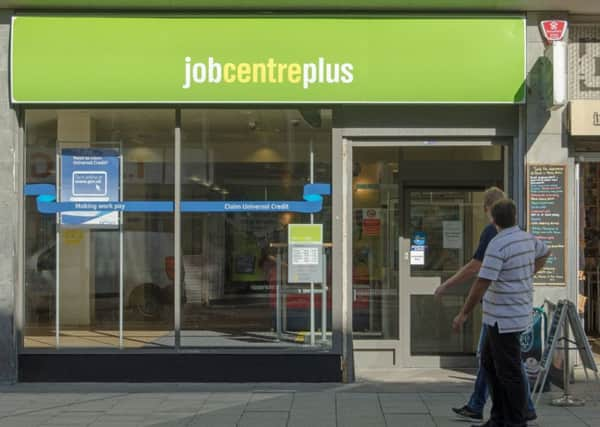Palmer & Harvey administration blamed for rise in Portsmouth area jobseekers


The rise can be blamed on the closure of two Palmer & Harvey sites in Fareham last month, a Job Centre spokeswoman said.
In the three months leading up to November, 2,230 people registered unemployed in Portsmouth - 12 per cent higher than 12 months ago.
Advertisement
Hide AdAdvertisement
Hide AdBut the number of people aged 18-24 out of work went down by 12 per cent, from 390 to 350.
Alison Avery, from Ryde Job Centre on the Isle of Wight, said staff were working hard to help the 229 Palmer & Harvey workers locally who had lost their jobs.
She said: ‘We have been doing a lot of work with Palmer & Harvey, and with local employers to help people get back into work.’
She added that the rise in jobseekers could be attributed to a ‘change in labour market conditions’ over the last year.
Advertisement
Hide AdAdvertisement
Hide AdIn Havant the figure rose 10 per cent to 1,120 this year, in Fareham it rose 16 per cent to 470 and in Gosport it increased 14 per cent to 655.
P&H employed 266 people at two sites in Fareham, in Barnes Wallis Road and Crompton Way in Segensworth.
The company went into administration last month.
Nationally the number of people in work has fallen by 56,000 in recent months, the biggest quarterly drop in more than two years.
There are just over 32 million people in employment, but the 56,000 reduction between August and October is the largest since the three months to May 2015, the Office for National Statistics (ONS) said.
Advertisement
Hide AdAdvertisement
Hide AdUnemployment fell by 26,000 to 1.4 million, which is 182,000 lower than a year ago.
Employment minister and East Hampshire MP Damian Hinds said: ‘We’re ending the year on a strong note, with figures showing the unemployment rate has fallen every month in 2017, and is now at the lowest it’s been in over 40 years.
‘Employment is at a near-record high, and there are over three million more people in work now compared to 2010 - that’s more than the population of Greater Manchester.’